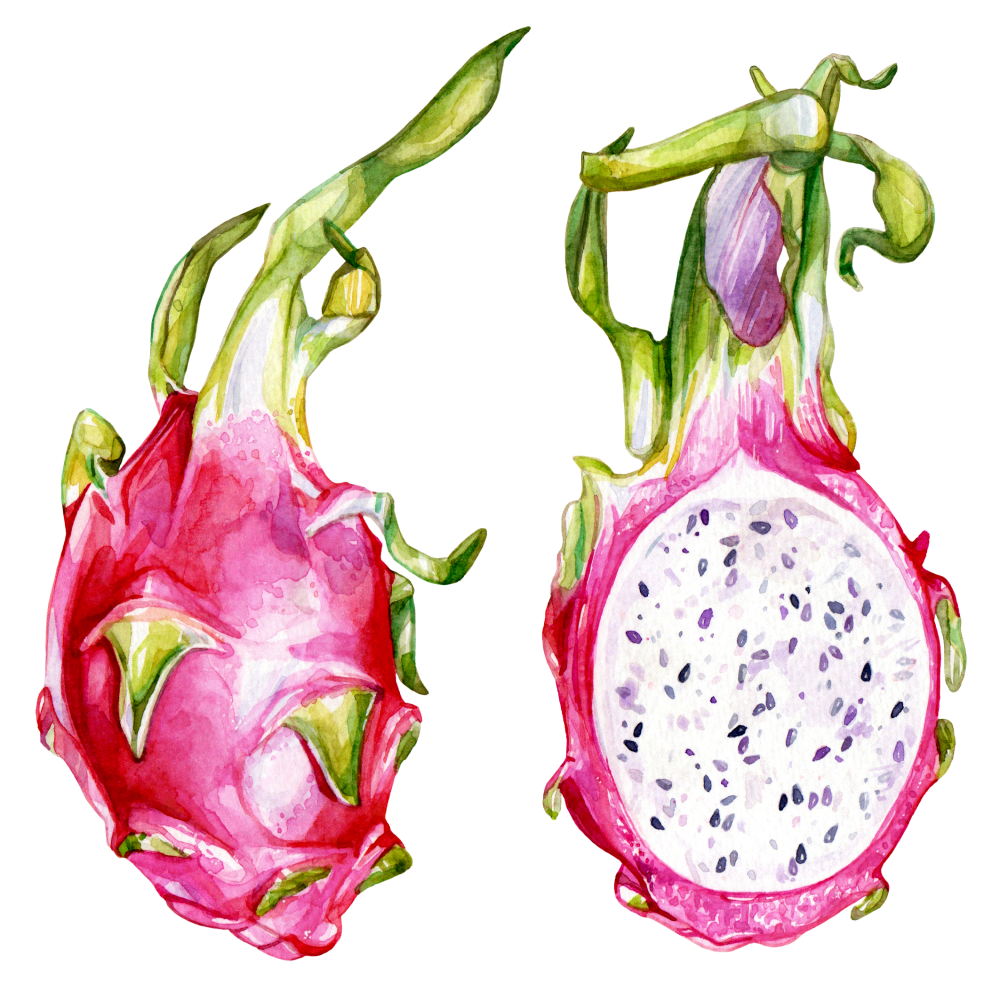Dragon Fruit

Latin name: Stenocereus spp., Selenicereus spp.
Other names: pitaya, pitahaya
Uses: fruit
What is dragon fruit?
Dragon fruit is produced by a half-dozen or so plants in the cactus family. They are related to prickly pears.
Why is dragon fruit healthy?
Dragon fruit is rich in fiber and contains a wealth of antioxidants, notably betacyanin and phenolic acid, which can protect against chronic diseases and cancer. It’s high in vitamin C and iron, and contains prebiotic compounds that support beneficial species of gut bacteria, which can improve digestion and boost immunity.
What does dragon fruit taste like?
Dragon fruit have succulent white, red, or yellow flesh (depending on the variety), with crunchy little seeds, and a flavor and texture similar to kiwi. Red-fleshed varieties have a stronger flavor, but yellow-skinned dragon fruits are sweeter. Most are mildly sweet with a pleasant slightly sour finish, but the flavor doesn’t really develop unless the fruit is fully ripe.
How do I use dragon fruit?
To eat a dragon fruit, slice it in half lengthwise and then peel off the skin with your fingers. Then you can slice or dice the flesh for salads and fruit cups or throw it into a blender.
What does dragon fruit pair well with?
Dragon fruit’s mild flavor can easily disappear if you try to do too much with it, but it pairs nicely with other fresh fruits (especially its brother from another mother kiwi). Take a cue from Mexico and juice it for aguas de pitaya. Dragon fruit also makes a cool addition to fruit salsa — use it with a fruitier chile like habanero or Fresno, minced shallot, fresh cilantro, and a squeeze of lime.
Where does dragon fruit grow?
Like their prickly pear cousins, dragon fruit cacti originated in Mesoamerica, though the exact location hasn’t yet been determined. Today they’re still grown there, as well as throughout tropical and subtropical regions of South and Southeast Asia, Australia, and the Caribbean. You can grow your own indoors, using a basic cactus planting mix, but take care not to overwater.
How to buy dragon fruit:
Look for the red, white, or yellow-fleshed fruits in better-stocked grocery stores (you’ll probably find more variety in Latin and Asian markets). The skin should be blemish-free, and the fruit should yield to gentle pressure. Store them at room temperature for a few days or bagged in the refrigerator for up to two weeks.
Surprising dragon fruit fact:
Dragon fruit is becoming an increasingly important commodity in regions of Mexico most affected by severe droughts brought about by climate change. Because it’s a drought-tolerant crop, Mexican farmers in Chiapas are planting less corn and beans and moving toward growing the fruiting cactus.

